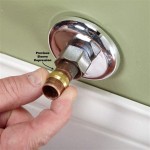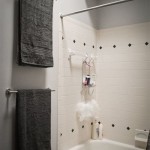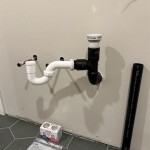Rectangular Vessel Bathroom Sinks: A Comprehensive Guide
Rectangular vessel bathroom sinks have emerged as a popular choice for homeowners and designers seeking a modern and sophisticated aesthetic. These sinks, characterized by their geometric shape and above-counter installation, offer a unique blend of style and functionality. This article provides a detailed exploration of rectangular vessel bathroom sinks, encompassing their design attributes, material options, installation procedures, maintenance requirements, and suitability for various bathroom styles.
Design and Aesthetics of Rectangular Vessel Sinks
Rectangular vessel sinks distinguish themselves primarily through their sharp, clean lines. This geometric precision contributes to a contemporary and minimalist look, making them a favored option for modern bathroom spaces. The rectangular form presents a strong visual statement, often serving as a focal point within the bathroom. Furthermore, the raised position of the sink, sitting atop the countertop, enhances its prominence and adds a sense of visual depth.
The aesthetic impact of a rectangular vessel sink goes beyond its shape. The dimensions, specifically the length, width, and height of the sink, significantly influence its overall appearance. Longer, wider sinks exude a sense of grandeur and spaciousness, making them well-suited for larger bathrooms. Conversely, smaller rectangular sinks are ideal for compact spaces, offering a streamlined and efficient design solution.
The depth of the sink also plays a crucial role in both aesthetics and functionality. Shallow sinks may prioritize a sleek and minimalist profile, but they might be prone to splashing. Deeper sinks, while potentially more practical in preventing water overflow, can appear more visually imposing. The balance between depth, dimensions, and overall bathroom size is a key consideration when selecting a rectangular vessel sink.
Beyond the basic shape and size, rectangular vessel sinks are available in a variety of designs that further enhance their aesthetic appeal. Some sinks feature subtle curves or rounded edges to soften the geometric lines, while others boast intricate textures or patterns on their exterior surfaces. The availability of different finishes, such as glossy, matte, or textured, allows for further customization to match the bathroom's overall design scheme.
The placement of the drain also contributes to the sink's visual appeal. Center drains are common, providing symmetry and balance. However, offset drains can offer a more contemporary and asymmetrical look, potentially maximizing usable space within the sink basin.
Material Choices for Rectangular Vessel Sinks
The material of a rectangular vessel sink significantly influences its durability, aesthetic appeal, and maintenance requirements. Several materials are commonly used in the manufacturing of these sinks, each possessing distinct characteristics.
Ceramic: Ceramic, particularly vitreous china, is a widely popular choice for bathroom sinks due to its durability, resistance to staining, and ease of cleaning. Ceramic sinks are typically fired at high temperatures, resulting in a non-porous surface that is resistant to bacteria and mold. They are also available in a wide range of colors and finishes. However, ceramic sinks can be susceptible to chipping or cracking upon impact.
Porcelain: Porcelain is similar to ceramic but is typically denser and more durable. It offers excellent resistance to scratches, stains, and heat. Porcelain sinks often have a glossy finish that is easy to clean and maintain. While more expensive than ceramic, porcelain sinks provide a longer lifespan and superior performance.
Glass: Glass vessel sinks offer a distinctive and contemporary look. They are typically made from tempered glass, which is highly durable and resistant to shattering. Glass sinks are available in a variety of colors, textures, and patterns, allowing for unique design possibilities. However, glass sinks can be more prone to water spots and smudges, requiring more frequent cleaning.
Stone: Natural stone, such as granite, marble, and travertine, can be used to create luxurious and visually striking rectangular vessel sinks. Stone sinks offer unique veining and patterns, adding a touch of natural elegance to the bathroom. However, stone sinks are porous and require sealing to prevent staining and water damage. They are also typically heavier and more expensive than other material options.
Stainless Steel: Stainless steel sinks are known for their durability, resistance to corrosion, and hygienic properties. They are a popular choice for modern bathrooms with an industrial or minimalist aesthetic. Stainless steel sinks are easy to clean and maintain, but they can be prone to scratches and water spots.
Concrete: Concrete vessel sinks offer a unique and industrial-chic aesthetic. They provide a raw and textured look that is often associated with modern design. Concrete sinks are durable and strong, but they require sealing to prevent staining and water damage. They are also relatively heavy and may require specialized installation.
The choice of material depends on several factors, including budget, desired aesthetic, durability requirements, and maintenance preferences. Each material offers a unique combination of characteristics that can complement different bathroom styles and lifestyles.
Installation and Plumbing Considerations
Installing a rectangular vessel sink requires careful planning and execution to ensure proper functionality and prevent leaks. The installation process typically involves several steps, including countertop preparation, sink placement, drain assembly, and faucet installation. Properly setting up the plumbing for a vessel sink is critical. Because the sink sits atop the counter, the drain line will often be visible and require more aesthetic consideration than a set-in sink.
Countertop Preparation: The countertop must be properly prepared to accommodate the vessel sink. This typically involves cutting a hole for the drain assembly and ensuring the surface is level and clean. Templates are often provided with the sink to guide the hole-cutting process. The countertop material should be compatible with the weight of the sink and be able to withstand moisture.
Sink Placement: The vessel sink is typically placed directly on the countertop, centered over the drain hole. Some sinks may require a mounting ring or adhesive to secure them to the countertop. It is crucial to ensure the sink is level and stable before proceeding with the drain assembly.
Drain Assembly: The drain assembly connects the sink to the plumbing system. This typically involves installing a tailpiece, a pop-up drain, and a P-trap. The P-trap is essential for preventing sewer gases from entering the bathroom. It is crucial to use plumber's putty or silicone sealant to create watertight connections between the various components of the drain assembly. Due to the elevated nature of the sink, an extended tailpiece may be necessary to reach the P-trap.
Faucet Installation: Faucets for rectangular vessel sinks are typically mounted on the countertop, either directly behind the sink or to the side. Tall faucets or vessel sink faucets are specifically designed to accommodate the height of the sink. The faucet should be compatible with the sink's design and functionality. The faucet installation process typically involves connecting the water supply lines and securing the faucet to the countertop.
Plumbing Considerations: Because vessel sinks sit above the counter, the plumbing may need to be adjusted to accommodate the height difference. This may involve extending the water supply lines and drainpipe. It is essential to consult with a qualified plumber to ensure the plumbing is properly installed and meets local codes.
Proper installation is crucial to prevent leaks, ensure proper drainage, and maintain the sink's stability. Hiring a professional plumber is recommended if the homeowner lacks experience with plumbing installations.
Maintenance and Cleaning of Rectangular Vessel Sinks
Regular cleaning and maintenance are essential for preserving the appearance and functionality of rectangular vessel sinks. The specific cleaning methods and frequency depend on the material of the sink and the type of stains or buildup.
Daily Cleaning: Daily cleaning typically involves wiping down the sink with a soft cloth and a mild detergent. This helps to remove water spots, soap scum, and other surface debris. Avoid using abrasive cleaners or scouring pads that can scratch the sink's surface.
Deep Cleaning: Deep cleaning should be performed periodically to remove stubborn stains and buildup. The specific cleaning methods vary depending on the material of the sink.
Ceramic and Porcelain: Ceramic and porcelain sinks can be cleaned with a non-abrasive bathroom cleaner. For stubborn stains, a paste of baking soda and water can be applied and gently scrubbed. Rinse thoroughly with water and dry with a soft cloth.
Glass: Glass sinks can be cleaned with a glass cleaner or a solution of vinegar and water. Wipe the sink with a soft cloth to prevent scratches. Dry thoroughly to prevent water spots.
Stone: Stone sinks require special care to prevent staining and water damage. Use a pH-neutral cleaner specifically designed for stone surfaces. Avoid using acidic or alkaline cleaners, which can damage the stone. Apply a stone sealant periodically to protect the surface.
Stainless Steel: Stainless steel sinks can be cleaned with a stainless steel cleaner or a solution of soap and water. Wipe the sink with a soft cloth in the direction of the grain to prevent scratches. Dry thoroughly to prevent water spots.
Concrete: Concrete sinks require sealing to protect them from staining and water damage. Clean the sink with a mild detergent and water. Avoid using abrasive cleaners or scrub brushes. Reapply the sealant periodically as needed.
In addition to regular cleaning, it is essential to address any leaks or plumbing issues promptly. Leaks can lead to water damage and mold growth. Regularly inspect the drain assembly and faucet connections for leaks. Consult with a qualified plumber for any necessary repairs.
By following these maintenance and cleaning guidelines, homeowners can ensure the longevity and beauty of their rectangular vessel bathroom sinks.

Portola Resin Rectangular Vessel Bathroom Sink Matte White

Interbath Matte S Glass Rectangular Vessel Bathroom Sink In Black With Faucet And Pop Up Drain Itb1112mb08 The Home Depot

Toolkiss 16 In Ceramic Rectangular Vessel Sink White With Faucet Kd Lw20 007 The Home Depot

Rectangular Vessel Sinks Thebath

Modern Rectangular Vessel Sink

Rectangular Vessel Sink Concrete Bathroom Slabhaus

Minimalist Collection Large Ceramic Rectangular Vessel Bathroom Sink

Premium Quality Elavo Modern Kraus Rectangular Ceramic Bathroom Sink

Tustin Vitreous China Rectangular Vessel Sink

Hbezon Brown Glass Rectangular Vessel Bathroom Sink Rs W928 22l Bn The Home Depot
Related Posts







